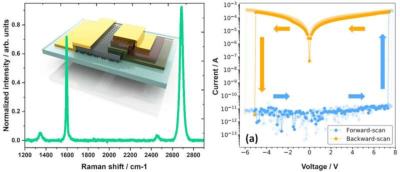Polaritons are coupled excitations of electromagnetic waves with either charged particles or vibrations in the atomic lattice of a given material. One of their most attractive properties is the capacity to confine light at the nanoscale, which is even more extreme in two-dimensional (2D) materials. 2D polaritons have been investigated by optical measurements using an external photodetector. However, their effective spectrally resolved electrical detection via far-field excitation remains unexplored. This hinders their exploitation in crucial applications such as sensing, hyperspectral imaging, and optical spectrometry, banking on their potential for integration with silicon technologies.
Recently, researchers from Spain's ICFO, the University of Ioannina, Universidade do Minho, the International Iberian Nanotechnology Laboratory, Kansas State University, the National Institute for Materials Science (Tsukba, Japan), POLIMA (University of Southern Denmark) and URCI (Institute of Materials Science and Computing, have reported on the electrical spectroscopy of polaritonic nanoresonators based on a high-quality 2D-material heterostructure, which serves at the same time as the photodetector and the polaritonic platform. Subsequently, the team electrically detected these mid-infrared resonators by near-field coupling to a graphene pn-junction. The nanoresonators simultaneously exhibited extreme lateral confinement and high-quality factors.






